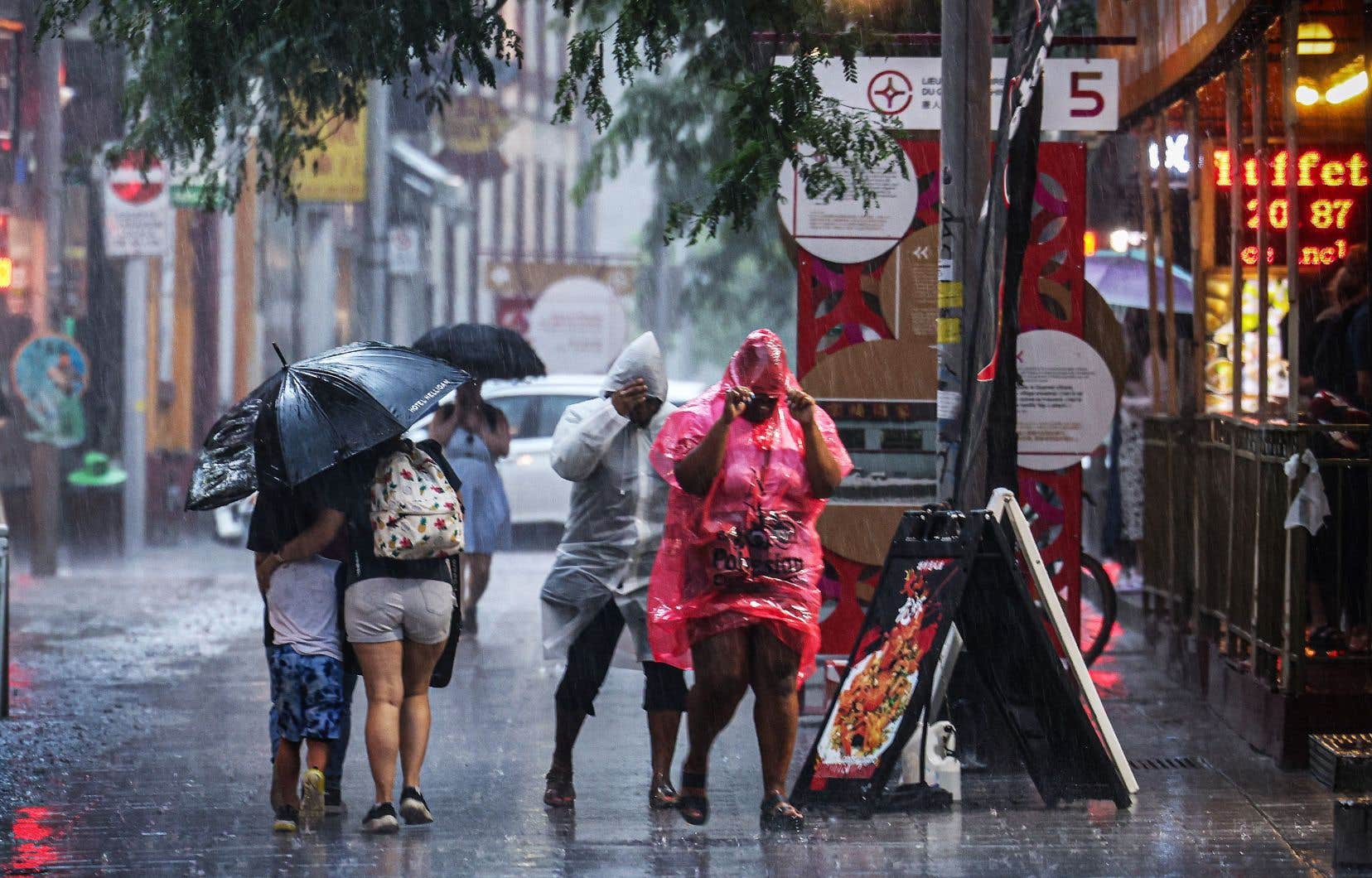Montreal received Thursday up to 88 mm of rain in two hours, the equivalent of a month of precipitation usually recorded in July. This deluge, which was accompanied by a tornado warning, caused flooding in more than 130 residences and led to wastewater discharges into the St. Lawrence River and the Rivière des Prairies.
“There is not a city in the world that has the infrastructure to take all this water,” said Philippe Sabourin, administrative spokesperson for the City of Montreal, on Friday.
Due to overflows, caused by the overflow of the sewer system, the City asks citizens to avoid nautical activities during the next 48 hours in the St. Lawrence River and the Rivière des Prairies.
During the storm, half a dozen overpasses had to be closed to traffic due to the accumulation of water, but at 9 p.m. Thursday evening the situation recovered and the lanes were clear Friday morning, a specified Philippe Sabourin.
As for the flooded residences, they are mainly located in the central districts, argued Mr. Sabourin.
The storm and strong winds also caused the fall of trees and branches on the territory. “But it’s nothing comparable to what we experienced in April”, however indicated the spokesperson for the City, referring to the episode of ice storm that occurred in the metropolis.
To mitigate the effects of this type of heavy rain, which is likely to be more frequent in the future, the City of Montreal has built retention basins and developed parks capable of effectively absorbing rainwater, such as Dickie-Moore, in Parc-Extension, and Place des Fleurs-de-Macadam, in Plateau-Mont-Royal. It has also set up some 200 bioretention cells at the edge of the road.
Further details will follow.
